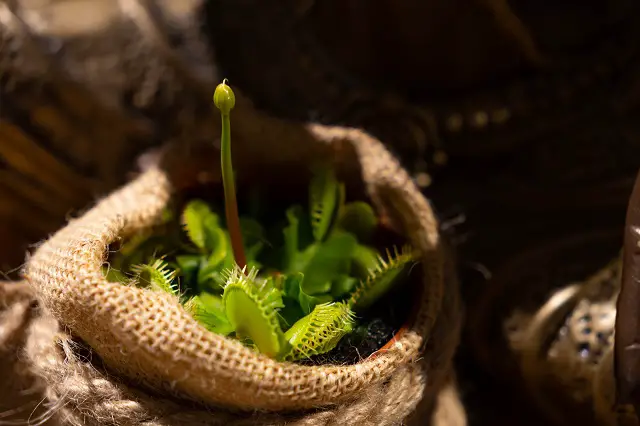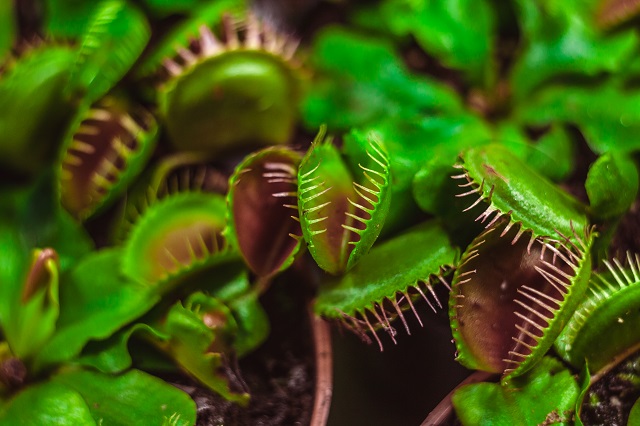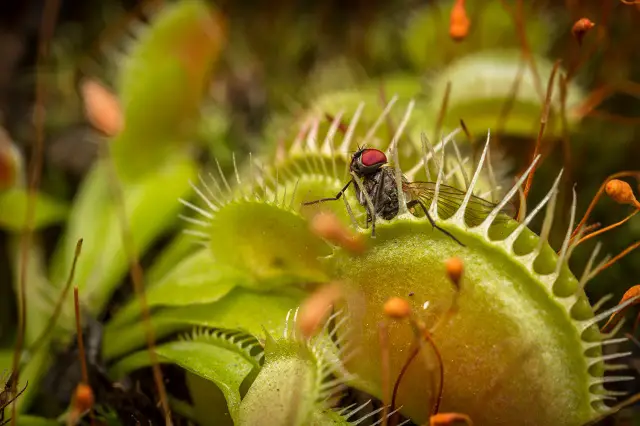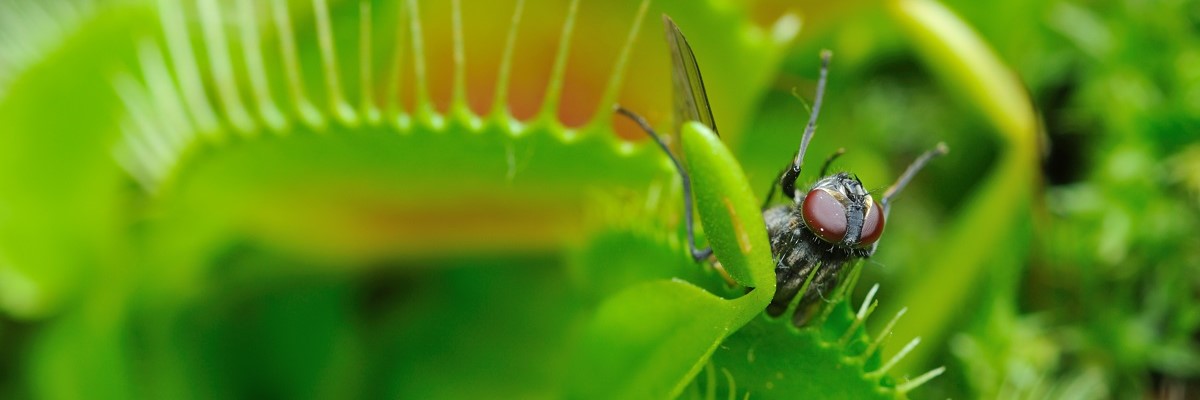The Venus Flytrap is not considered to be venomous. While it can trap and digest insects, it does not produce any toxic or harmful substances that would be classified as venom. The plant uses its unique adaptations, such as its modified leaves and triggers hairs, to capture its prey, but it does not inject or secrete any harmful chemicals. Instead, the plant relies on digestive enzymes to break down the insects and extract nutrients from them. This process is completely safe for the plant and does not pose any danger to humans or other animals. While the Venus Flytrap may be a fascinating and unusual plant, it is not considered to be venomous.
What is venom
Venom is a toxic substance that is produced by certain animals and delivered to their prey, predators, or attackers through biting, stinging, or other means. Venoms are typically used for self-defence or for hunting and are specifically adapted to cause harm or incapacitate their target. They may contain a variety of toxic compounds, including enzymes, proteins, and other biologically active molecules, that can produce a wide range of effects, such as pain, swelling, paralysis, or even death.
Venoms are found in a variety of animal species, including snakes, spiders, scorpions, jellyfish, and some species of fish and frogs. Each type of venom is unique and adapted to the specific needs of the animal that produces it. Some venoms are designed to immobilize or kill prey, while others are used for self-defence or to deter predators. Despite their potential danger, many venoms are also used for medicinal purposes, containing compounds that can treat various medical conditions.

Potential dangers of the Venus Flytrap
The Venus Flytrap is not considered to be dangerous to humans or other animals. While it may look intimidating with its modified leaves that are capable of trapping insects, the plant does not produce any toxic or harmful substances that would pose a risk to people or pets. The Venus Flytrap is a carnivorous plant that uses its unique adaptations to capture and digest insects, but this process is completely safe and does not involve the injection or secretion of any harmful chemicals.
It is important to note that the Venus Flytrap is not harmful to touch or handle, but it is also not recommended to play with or manipulate the plant, as this can cause damage to its delicate leaves and affect its overall health. In addition, it is not recommended to feed the Venus Flytrap anything other than small, live insects, as feeding it other types of food or inappropriate materials can harm the plant and interfere with its natural feeding process.
It’s also important to keep in mind that the Venus Flytrap is native to the subtropical wetlands of North and South Carolina and should not be released into the wild outside of its natural habitat, as it can become an invasive species and cause harm to local ecosystems.
In summary, the Venus Flytrap is not considered to be dangerous and does not pose any threat to humans or other animals. While it is fascinating to observe and study, handling the plant with care, respecting its unique adaptations and feeding habits, and preserving its natural habitat is important.
What is the Venus Flytrap
The Venus Flytrap is a small, herbaceous carnivorous plant that is native to the subtropical wetlands of North and South Carolina. It is a member of the Droseraceae family and is characterized by its modified leaves, which are used to capture and digest insects.
The Venus Flytrap has rosettes of 4-7 leaves that grow from a short stem and reach a maximum height of about 5-7 cm. The leaves are typically green and have a smooth, fleshy texture, with serrated edges that are lined with tiny, sensitive trigger hairs. When an insect lands on the leaf and touches these hairs, the leaf rapidly closes and traps the insect inside, forming a tight seal.
In addition to its modified leaves, the Venus Flytrap also produces small, white or pink flowers that bloom on a tall stalk above the leaves. These flowers are attractive to insects and are used by the plant to attract new prey.
In conclusion, the Venus Flytrap is a unique and fascinating carnivorous plant that is characterized by its modified leaves and trigger hairs, which are used to capture and digest insects. Its small size, green leaves, and white or pink flowers make it a distinctive and recognizable species that is a popular addition to many gardens and homes.
Flytrap’s unique adaptations
The Venus Flytrap is a unique and fascinating carnivorous plant that has evolved several adaptations that enable it to capture and digest insects. These adaptations have allowed the Venus Flytrap to thrive in nutrient-poor soils and to supplement its nutrition with the nutrients contained in its prey.
One of the most distinctive adaptations of the Venus Flytrap is its modified leaves, which are specially designed to trap insects. The leaves have serrated edges that are lined with tiny, sensitive trigger hairs, and when an insect lands on the leaf and touches these hairs, the leaf rapidly closes, trapping the insect inside. The closure of the leaf creates a tight seal, which prevents the insect from escaping, and allows the Venus Flytrap to begin the process of digesting its prey.
Another adaptation of the Venus Flytrap is its ability to produce digestive juices, which it uses to break down the insect’s soft tissues and absorb the nutrients contained within. The digestive process typically takes several days to complete, after which the Venus Flytrap reopens its leaves and discards the remaining exoskeleton of the insect.
In addition to its modified leaves and digestive abilities, the Venus Flytrap also has a unique mechanism for conserving energy. When the plant does not have access to prey, it goes into a dormant state, in which its leaves fold together and its metabolism slows down, conserving energy and allowing the plant to survive until conditions improve and new prey becomes available.
In conclusion, the Venus Flytrap is a remarkable plant that has evolved several adaptations that enable it to survive and thrive in its natural environment. Its modified leaves, digestive abilities, and energy-conserving mechanisms are all fascinating examples of the amazing abilities of the natural world and make the Venus Flytrap a fascinating subject for study and observation.
The Venus Flytrap’s Diet
The Venus Flytrap uses its modified leaves, which are lined with tiny, sensitive trigger hairs, to capture its prey. When an insect lands on the leaf and touches these hairs, the leaf rapidly closes, trapping the insect inside. The plant then secretes digestive juices, which break down the insect’s soft tissues and allow the Venus Flytrap to absorb the nutrients contained within.
In order to maintain its health and vitality, the Venus Flytrap needs to consume a certain amount of prey each year. It typically feeds on 2-5 insects per year, but this number can vary depending on the plant’s size and the prey’s availability in its environment.
In conclusion, the Venus Flytrap is a carnivorous plant that feeds on insects in order to obtain the essential nutrients that it cannot obtain from its nutrient-poor soil. Its unique adaptations, such as its modified leaves and digestive abilities, make it a fascinating subject for study and observation and highlight the incredible abilities of the natural world.

Venus Flytrap how it processes the insects it catches
The Venus Flytrap is a carnivorous plant that uses its modified leaves to capture and process insects as a source of food and essential nutrients. The process of digesting insects is essential for the plant’s survival, as it grows in nutrient-poor soils that do not provide it with the nutrients it needs to thrive.
Once an insect is trapped inside the Venus Flytrap‘s leaves, the plant secretes digestive juices that break down the insect’s soft tissues. This process allows the Venus Flytrap to absorb the nutrients contained within the insect, such as proteins, amino acids, and minerals, which are essential for its growth and survival.
The digestive process typically takes several days to complete, and during this time, the Venus Flytrap must carefully regulate the conditions inside its leaves in order to maximize the efficiency of the digestive process and prevent the insect from decomposing and releasing harmful bacteria or toxins.
Once the digestive process is complete, the Venus Flytrap reopens its leaves and discards the remaining exoskeleton of the insect. Each time the plant captures a new insect, this process is repeated, allowing it to obtain the essential nutrients needed to survive and thrive.
In conclusion, the Venus Flytrap is a remarkable plant that uses its modified leaves and digestive abilities to process insects as a food source and essential nutrients. The efficiency and effectiveness of this process are critical for the plant’s survival in its nutrient-poor environment and make the Venus Flytrap a fascinating subject for study and observation.
Comparison to other carnivorous plants
The Venus Flytrap is just one of many species of carnivorous plants that have evolved unique adaptations in order to survive in nutrient-poor environments. While it is one of the most well-known and widely recognized carnivorous plants, there are many other species that are equally fascinating and deserving of attention.
For example, the Pitcher Plant is another well-known carnivorous plant that captures insects in a similar manner to the Venus Flytrap. Unlike the Venus Flytrap, however, the Pitcher Plant uses a deep, cup-like structure filled with digestive fluids to capture its prey. The slippery sides of the pitcher prevent insects from escaping, and the digestive fluids break down the insect’s soft tissues, allowing the plant to absorb the nutrients.
The Sundew is another carnivorous plant species using modified leaves covered in sticky, glandular hairs to capture prey. When an insect lands on the leaf, the sticky hairs wrap around the insect, preventing it from escaping. The plant then secretes digestive juices, which break down the insect’s tissues and allow the plant to absorb the nutrients.
In conclusion, the Venus Flytrap is just one of many species of carnivorous plants that have evolved unique adaptations in order to survive in nutrient-poor environments. While each species has its own unique methods of capturing and processing its prey, they all demonstrate the incredible abilities of the natural world and the importance of adaptation and survival in the face of environmental challenges.

Conclusion
this article, we have explored the fascinating world of the Venus Flytrap and its unique adaptations. We have discussed the plant’s physical appearance, its diet, and the process it uses to capture and digest insects. Additionally, we have compared the Venus Flytrap to other species of carnivorous plants and explored the potential dangers of the plant.
In conclusion, the Venus Flytrap is a remarkable plant that demonstrates the incredible abilities of the natural world to adapt and survive in nutrient-poor environments. While it may look fearsome and dangerous, the Venus Flytrap is not venomous and poses no significant threat to humans or other animals. In fact, it is a fascinating subject for study and observation and is an important part of the diverse and complex ecosystem that surrounds us. Whether you are a botanist, a nature enthusiast, or simply someone curious about the world around us, the Venus Flytrap is a plant that will captivate your imagination and spark a sense of wonder.


